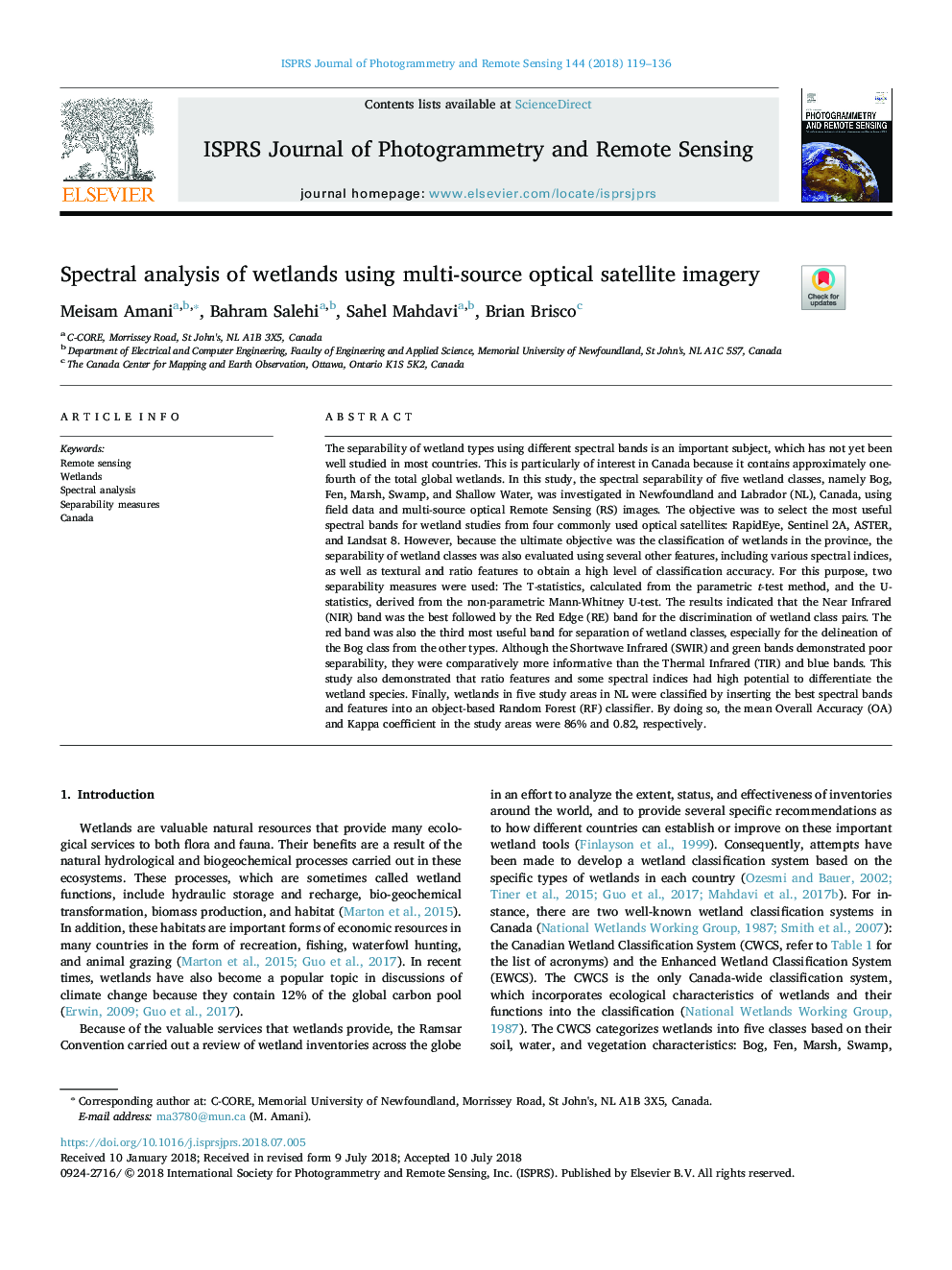| کد مقاله | کد نشریه | سال انتشار | مقاله انگلیسی | نسخه تمام متن |
|---|---|---|---|---|
| 6949027 | 1451230 | 2018 | 18 صفحه PDF | دانلود رایگان |
عنوان انگلیسی مقاله ISI
Spectral analysis of wetlands using multi-source optical satellite imagery
ترجمه فارسی عنوان
تجزیه و تحلیل طیفی تالاب ها با استفاده از تصاویر ماهواره ای نوری چند منبع
دانلود مقاله + سفارش ترجمه
دانلود مقاله ISI انگلیسی
رایگان برای ایرانیان
کلمات کلیدی
سنجش از دور، تالابها، تجزیه طیفی، اقدامات جداسازی، کانادا،
موضوعات مرتبط
مهندسی و علوم پایه
مهندسی کامپیوتر
سیستم های اطلاعاتی
چکیده انگلیسی
The separability of wetland types using different spectral bands is an important subject, which has not yet been well studied in most countries. This is particularly of interest in Canada because it contains approximately one-fourth of the total global wetlands. In this study, the spectral separability of five wetland classes, namely Bog, Fen, Marsh, Swamp, and Shallow Water, was investigated in Newfoundland and Labrador (NL), Canada, using field data and multi-source optical Remote Sensing (RS) images. The objective was to select the most useful spectral bands for wetland studies from four commonly used optical satellites: RapidEye, Sentinel 2A, ASTER, and Landsat 8. However, because the ultimate objective was the classification of wetlands in the province, the separability of wetland classes was also evaluated using several other features, including various spectral indices, as well as textural and ratio features to obtain a high level of classification accuracy. For this purpose, two separability measures were used: The T-statistics, calculated from the parametric t-test method, and the U-statistics, derived from the non-parametric Mann-Whitney U-test. The results indicated that the Near Infrared (NIR) band was the best followed by the Red Edge (RE) band for the discrimination of wetland class pairs. The red band was also the third most useful band for separation of wetland classes, especially for the delineation of the Bog class from the other types. Although the Shortwave Infrared (SWIR) and green bands demonstrated poor separability, they were comparatively more informative than the Thermal Infrared (TIR) and blue bands. This study also demonstrated that ratio features and some spectral indices had high potential to differentiate the wetland species. Finally, wetlands in five study areas in NL were classified by inserting the best spectral bands and features into an object-based Random Forest (RF) classifier. By doing so, the mean Overall Accuracy (OA) and Kappa coefficient in the study areas were 86% and 0.82, respectively.
ناشر
Database: Elsevier - ScienceDirect (ساینس دایرکت)
Journal: ISPRS Journal of Photogrammetry and Remote Sensing - Volume 144, October 2018, Pages 119-136
Journal: ISPRS Journal of Photogrammetry and Remote Sensing - Volume 144, October 2018, Pages 119-136
نویسندگان
Meisam Amani, Bahram Salehi, Sahel Mahdavi, Brian Brisco,
